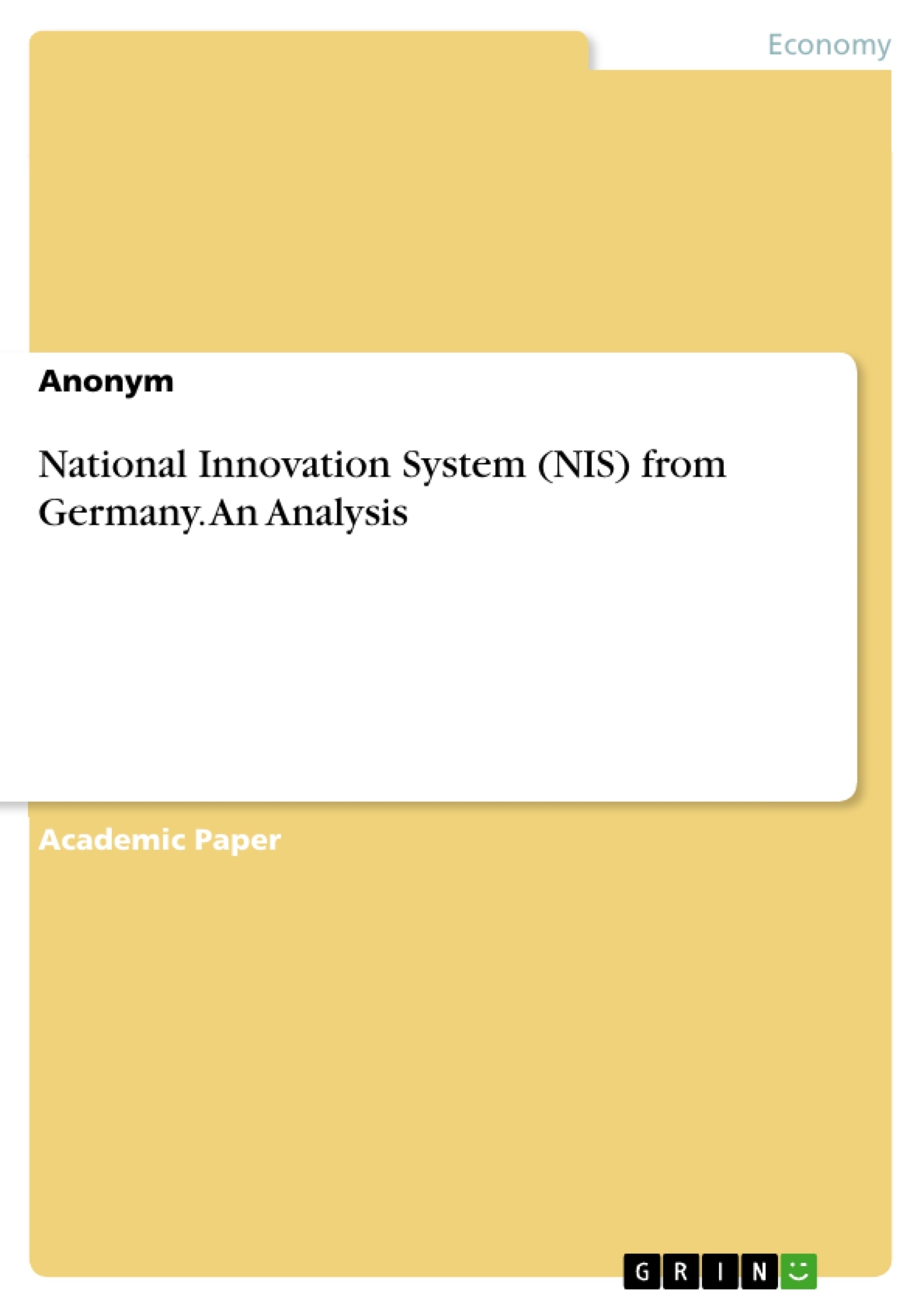This thesis deals with the National Innovation System from Germany. Germany’s reputation as innovation driver is however not only rooted in the achievements of the past. The country has seen drastic changes within its industries whereby some of the former flagship industries disappeared and new ones gained more importance. Especially in today’s times, the challenges of globalization, a growing amount of (digital) interconnections and the emergence of new national and international players put pressure on the German NIS. It is therefore important to maintain the focus on the most important and economically sustainable industries by creating new knowledge and innovation and by assuring the directed and speedy diffusion of both.
The nation has properly assessed the current challenges and acts in accordance with the fast changing environment by investing more than 100 billion US-Dollars in research and development (R&D) per year, securing their place as the nation with the fifth most patents worldwide and eventually turning Germany into one of the most important actors on the global economic landscape. Here, the country is especially characterized by its highly innovative industries with the automotive sector leading the way in terms of innovation spending. The successful German NIS however is not only achieved through its national industries but moreover roots in other factors like the interactions of public and private research efforts. These factors and characteristics of the German NIS are multifaced and will therefore be examined more closely during the following to provide a comprehensive overview of Germany’s approach to innovation and its subsequent diffusion.
Inhaltsverzeichnis (Table of Contents)
- Introduction
- The creation and diffusion of innovation within the German NIS
- Joint industry activities in Germany
- Public and private interactions
- The diffusion of technology
- Education system and personnel mobility of German researchers
- Conclusion
Zielsetzung und Themenschwerpunkte (Objectives and Key Themes)
This assignment examines the creation and diffusion of innovation within the German national innovation system (NIS). The work delves into the historical development of the NIS, highlighting the influential role of key companies and research institutions like Siemens, Daimler, BASF, and the Max Planck Society. It analyzes the evolving dynamics of the NIS in the context of global challenges and technological advancements, emphasizing the importance of fostering innovation and ensuring its effective dissemination.
- The role of joint industry activities in driving innovation within the German NIS
- The interplay between public and private research efforts in shaping the innovation landscape
- The impact of education and research mobility on innovation within the German NIS
- The influence of historical and structural factors on the German NIS
- The challenges and opportunities facing the German NIS in the contemporary globalized environment
Zusammenfassung der Kapitel (Chapter Summaries)
- Introduction: This chapter introduces the concept of Germany's national innovation system (NIS) and its historical roots, tracing its evolution from the founding of major companies like Siemens and Daimler to the present day. It outlines the challenges posed by globalization, digitalization, and the emergence of new players, and emphasizes the crucial role of innovation and its effective dissemination in maintaining Germany's economic competitiveness.
- The creation and diffusion of innovation within the German NIS: This chapter delves into the key components of the German NIS, examining the interconnectedness of joint industry activities, public-private research interactions, technology diffusion, and the role of education and research mobility.
- Joint industry activities in Germany: This section highlights the significance of joint industry activities in driving innovation. It analyzes both formal and informal collaborations between companies, emphasizing the importance of resource pooling, scale effects, and knowledge sharing in achieving innovation. The chapter provides specific examples from the automotive industry, demonstrating how collaborations between OEMs, suppliers, and end-users contribute to the development of new technologies, such as autonomous driving.
- Public and private interactions: This section explores the crucial role of public research institutions in the German NIS. It examines the institutional framework designed to promote research excellence, efficiently allocate resources, and direct funding to promising researchers and institutions. The chapter touches on the importance of organizations like the Science Council and the Deutsche Forschungsgemeinschaft (DFG) in shaping the research landscape.
Schlüsselwörter (Keywords)
The key focus of this work lies on the German national innovation system (NIS), encompassing key areas such as joint industry activities, public-private research interactions, technology diffusion, education, and personnel mobility. The analysis explores the role of major companies like Siemens, Daimler, and BASF, as well as research institutions such as the Max Planck Society, in shaping the NIS. The work addresses contemporary challenges, including globalization and digitalization, and emphasizes the importance of fostering innovation and its effective dissemination to maintain Germany's economic competitiveness.
- Citar trabajo
- Anonym (Autor), 2020, National Innovation System (NIS) from Germany. An Analysis, Múnich, GRIN Verlag, https://www.grin.com/document/1030207



